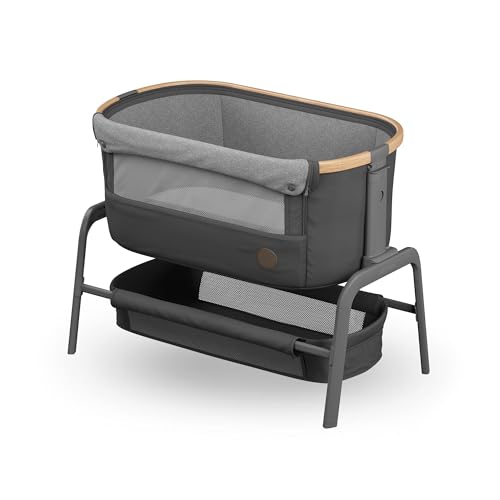Choosing the Right Bedside Cot for First-Time Parents
The shift to ending up being a parent is filled with delight, excitement, and a myriad of responsibilities. For first-time parents, among the significant choices they deal with is picking the right sleeping plan for their newborn. One popular choice gaining traction is the bedside cot, likewise referred to as a co-sleeper. This short article will explore the various elements of bedside cots, offering a comprehensive guide for first-time parents to help them make informed choices.
What is a Bedside Cot?
A bedside cot is a specially developed crib that attaches to the side of the parental bed, enabling parents to keep their newborn close during the night while making sure the baby has their own safe sleeping space. This set-up promotes easier breastfeeding, comforting, and tracking of the baby without the threats related to sharing a bed.
Benefits of a Bedside Cot
- Security: Bedside cots are developed to provide a safe sleeping location for the baby, minimizing the dangers related to bed-sharing.
- Convenience: Parents can easily access their baby without requiring to get out of bed, making nighttime feedings and diaper changes easier.
- Bonding: Having the baby nearby motivates bonding and reassurance, relieving adult stress and anxiety.
- Sleep Quality: With a bedside cot, parents can sleep more peacefully understanding their baby neighbors while still having their own space.
Types of Bedside Cots
When selecting a bedside cot, first-time parents will experience numerous styles and features. Here are the primary types:
| Type | Description | Functions |
|---|---|---|
| Conventional Co-Sleeper | A crib that attaches firmly to the bed, allowing parents to reach the baby quickly. | Adjustable height, detachable side panel |
| Mini Cot | Smaller than a standard crib, terrific for space-saving in small rooms. | Lightweight, portable, frequently includes wheels |
| Convertible Cot | A versatile alternative that converts from a bedside cot to a standalone crib. | Long-lasting, can adjust as the baby grows |
| Load 'n Play | A portable play lawn that can be utilized as a bedside cot for travel. | Versatile, folds easily, includes altering table |
Secret Features to Consider
Selecting the right bedside cot involves more than just selecting a style. Parents should consider the following features:
- Safety Standards: Ensure the cot fulfills security policies to protect the baby.
- Height Adjustability: A cot that can adapt to the height of the parents' bed provides better access and convenience.
- Alleviate of Assembly: Many cots are created for quick, easy assembly and disassembly, which is beneficial for hectic new parents.
- Portability: Lightweight and portable alternatives are ideal for households who travel often.
- Bed mattress Quality: A firm, breathable bed mattress is essential for the baby's security and comfort.
- Storage Capabilities: Some cots come geared up with shelves or storage compartments for baby essentials, which can help keep things organized.
Tips for Safe Sleeping Practices
Even with the most safe bedding arrangements, parents ought to constantly follow safe sleeping practices to protect their newborns. The following guidelines should be stuck to:
- Place the baby on their back: Always lay the baby to sleep on their back to lower the threat of Sudden Infant Death Syndrome (SIDS).
- Use a company mattress: Ensure the bed mattress fits comfortably in the cot with no sagging or spaces.
- Prevent soft bed linen: Keep pillows, blankets, and stuffed animals out of the baby's sleeping location.
- Display the baby's temperature level: Overheating can be a danger element for SIDS; dress the baby appropriately for the weather condition.
Frequently Asked Questions (FAQs)
1. Are bedside cots safe for newborns?
Yes, when following the maker's standards and sticking to safe sleeping practices, bedside cots can be a safe sleeping choice for newborns.
2. Can a bedside cot be used for co-sleeping?
Yes, a bedside cot enables for nearness in between parents and the baby without the dangers related to bed-sharing. It supplies a separate sleeping area while being quickly available.
3. For how long can a baby use a bedside cot?
This generally depends on the size of the cot and the baby's growth. Most bedside cots can be utilized till the baby reaches around 6 to 12 months or is able to climb up out.
4. Do I require to buy unique bedding for a bedside cot?
A lot of bedside cots use basic crib bedding, however it's necessary to inspect the manufacturer's recommendations for sizes and types of bed linen ideal for the particular cot.
5. Can bedside cots be used for travel?
Yes, many bedside cots are created with mobility in mind. Some can quickly fold and include bring cases for convenient travel.
For first-time parents, the option of sleeping arrangements for a newborn can be intimidating. Bedside cots provide a great compromise between closeness and safety, encouraging bonding while ensuring the baby has a safe space to sleep. By exploring the types, functions, and safety standards, new parents can make educated choices that finest fit their family's requirements. With cots4tots , parents can take pleasure in peaceful nights and confident care for their newborn.

